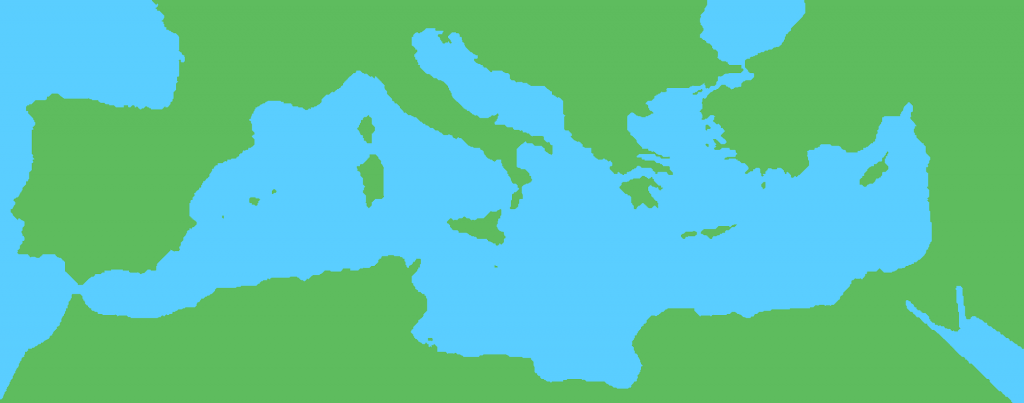Regions across the world where there are similar climatic conditions share much more in common than their temperature, humidity, wind, and other meteorological variables. The environmental conditions determine which species of any given kingdom can survive and flourish. No matter the distance between them, two regions will compose of species with common characteristics and strategies that enable them to cope with the similar environment around them.
Mediterranean climate and biomes
The climate varies depending on the position on the world globe. One of the most well-known is the Mediterranean climate, which occurs in zones located between 30 and 40 degrees north and south of the equator, typically on the west side of the continents. The Mediterranean climate is characterized by mild, rainy winters and dry summers that vary from warm to hot. These specific conditions are present in five biomes, called Mediterranean biomes, which are located in:
- The Mediterranean basin
- California
- Chile
- South cape in South Africa, and
- Southwestern Australia
The largest of those is the Mediterranean basin. It consists of countries in southern Europe, West Asia, and North Africa that are exposed to the Mediterranean Sea. Furthermore, these are regions with rich vegetation and flora compared to the other biomes.
Vegetation and flora of the Mediterranean biome
The Mediterranean vegetation consists of evergreen shrubs and sclerophyllous trees. The presence of such plants is an adaptation to the difficult conditions they face, such as drought in the summer and moisture during winters. Another dangerous factor they have to get over is the high probability of fire occurrence. Fires are common in the Mediterranean biomes and burn large areas, so new plants need to be formed from seeds, cones, roots, or other adaptations.
Since the Mediterranean basin makes up the largest and richest Mediterranean biome, we will discuss two main types of flora that are found in the Mediterranean countries. These are maquis and garrigue, each one with its distinctive features and species, even though sometimes the use of the two terms is not clear. However, keep in mind that similar types of plants are present in the other biomes, as well. One of the main reasons for this similarity is convergent evolution. That is a mechanism resulting in organisms developing similar traits not because they have inherited them from a common ancestor but as an adaptation to similar environmental conditions.
Maquis
Maquis includes evergreen shrubs or small trees found in the Mediterranean forests. The leaves are broad, dark green, and leathery. There are woody branches and roots that reach deep into the soil to find water during the dry periods of the year. Maquis vegetation prefers acid soils. The shrubs are usually closely located, creating dense formations and their height is 2 to 3 meters. The maquis vegetation is prone to fires but also has the ability to be reborn after fires.
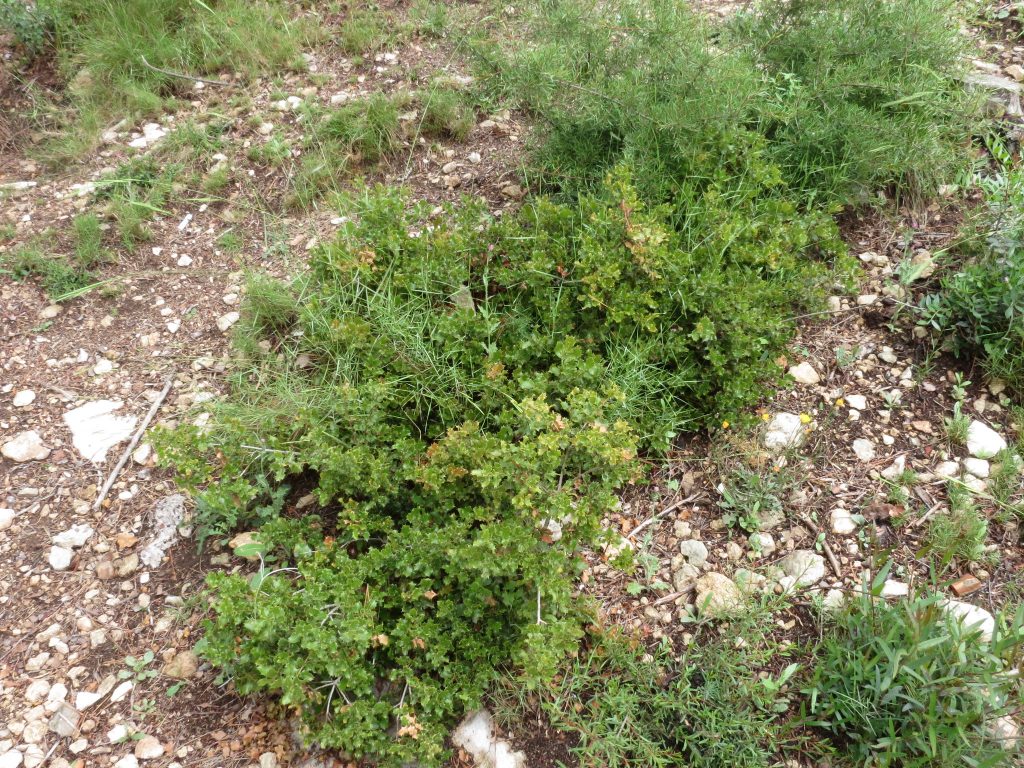
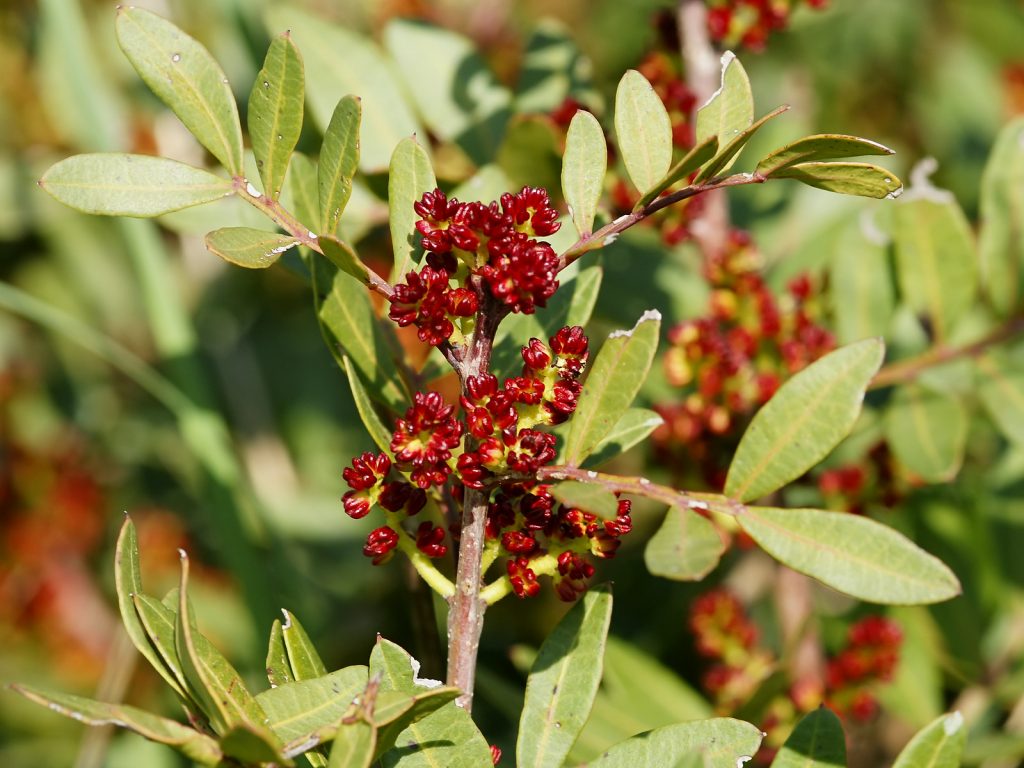
Some common examples of species that belong to maquis are Ceratonia siliqua (carob), Arbutus unedo (strawberry tree), Pistacia lentiscus (mastic tree), Olea europaea (olive tree), Quercus coccifera (kermes oak), and Myrtus communis (true myrtle).

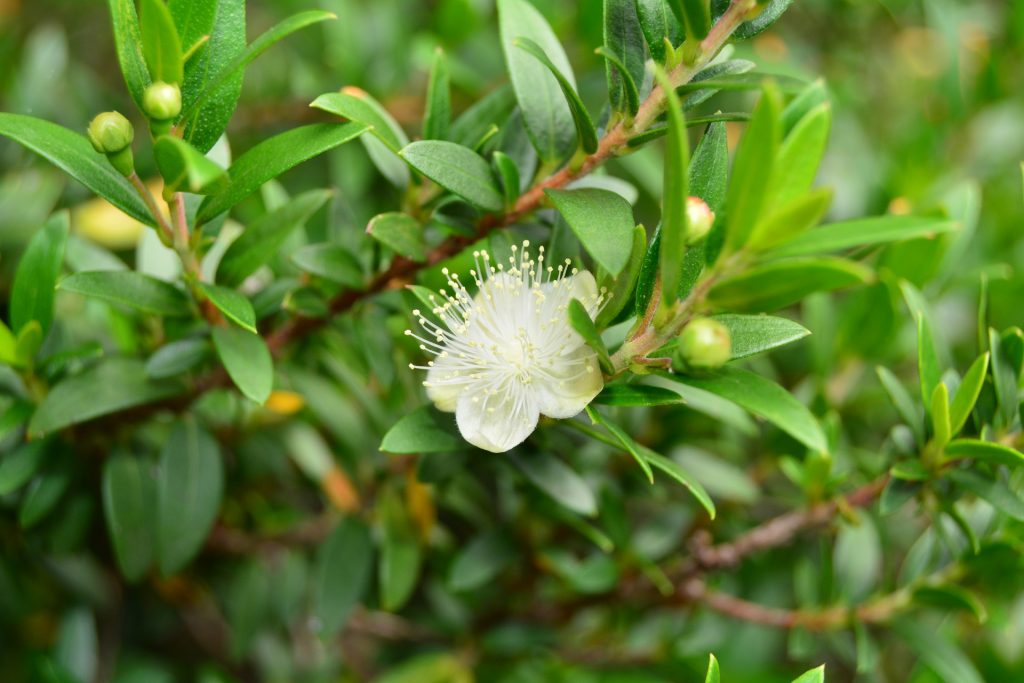
Garrigue
Garrigue consists of small plants, mainly short bushes with soft and thorny leaves that are found in forests and shrub biomes. A characteristic difference between maquis and garrigue is that the latter requires alkaline soils that are also thin and rocky. Garrigue plants bloom during the spring and summer days and can withstand the drought and high temperatures of the summer. In the garrigue ecosystems, there are open spaces between the bushes. That is mostly the result of allelopathy, the mechanism of producing chemicals that restrict the growth of neighboring plants. Many plants of this type are aromatic or have been used for medicinal purposes since ancient times. Garrigue biomes are often the result of degraded ecosystems due to fires, sheep introduction, or other forms of human impact.
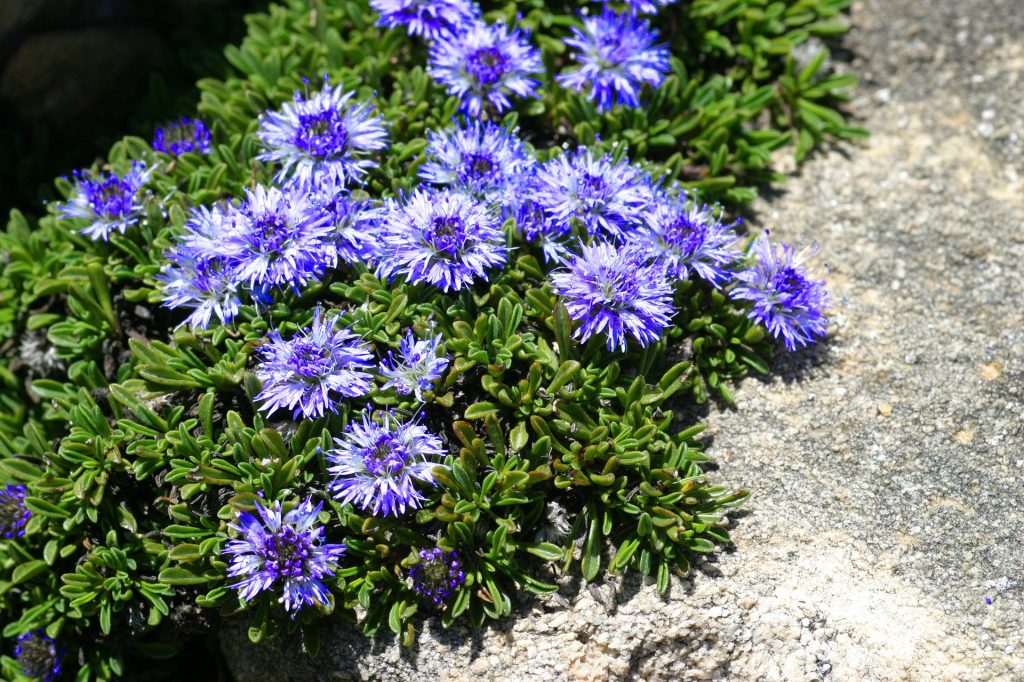
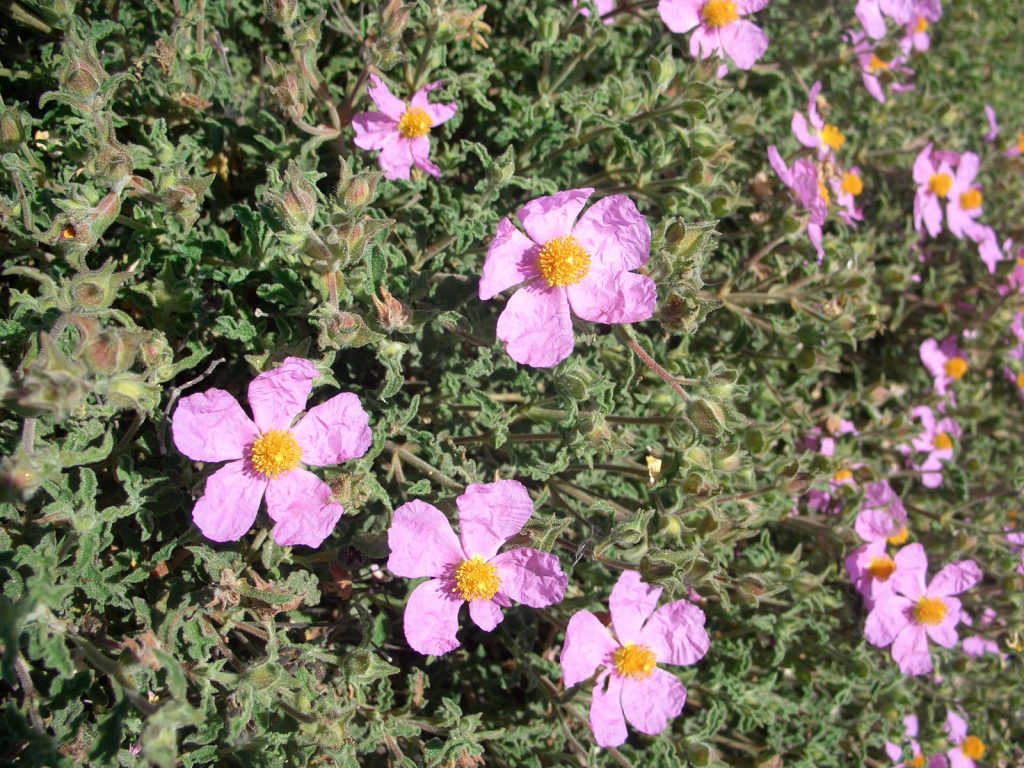
Some examples of plants belonging to garrigue are Coridothymus capitatus (thyme), Cistus creticus (pink rock rose), Asphodelus aestivus (asphodel), Globularia alypum (globe daisy), Asparagus acutifolius (wild asparagus), and Lavandula stoechas (lavender).
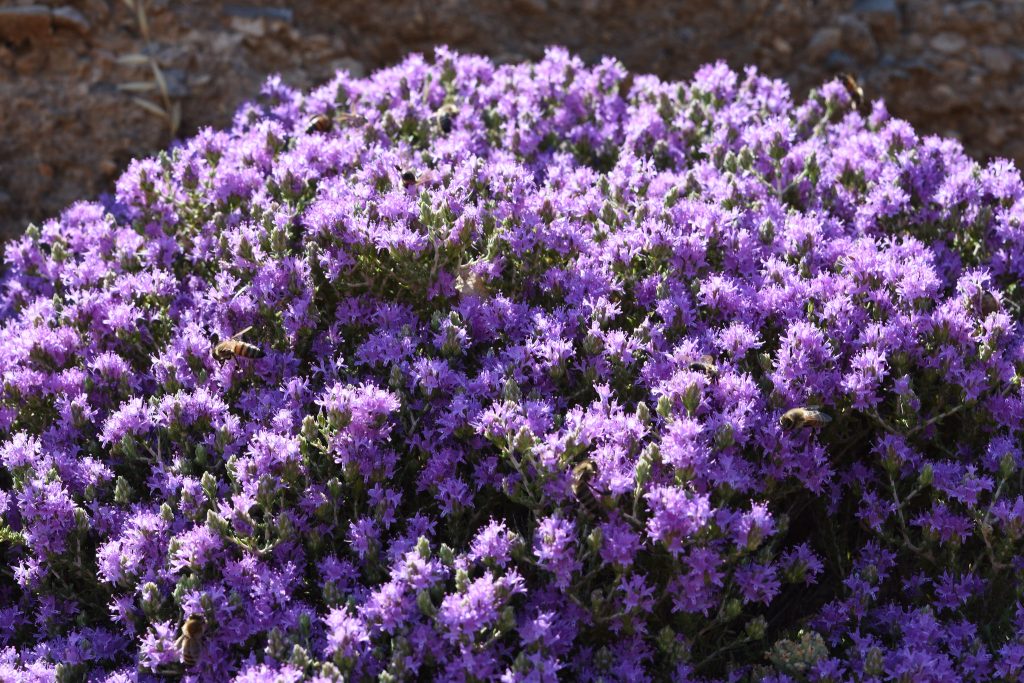
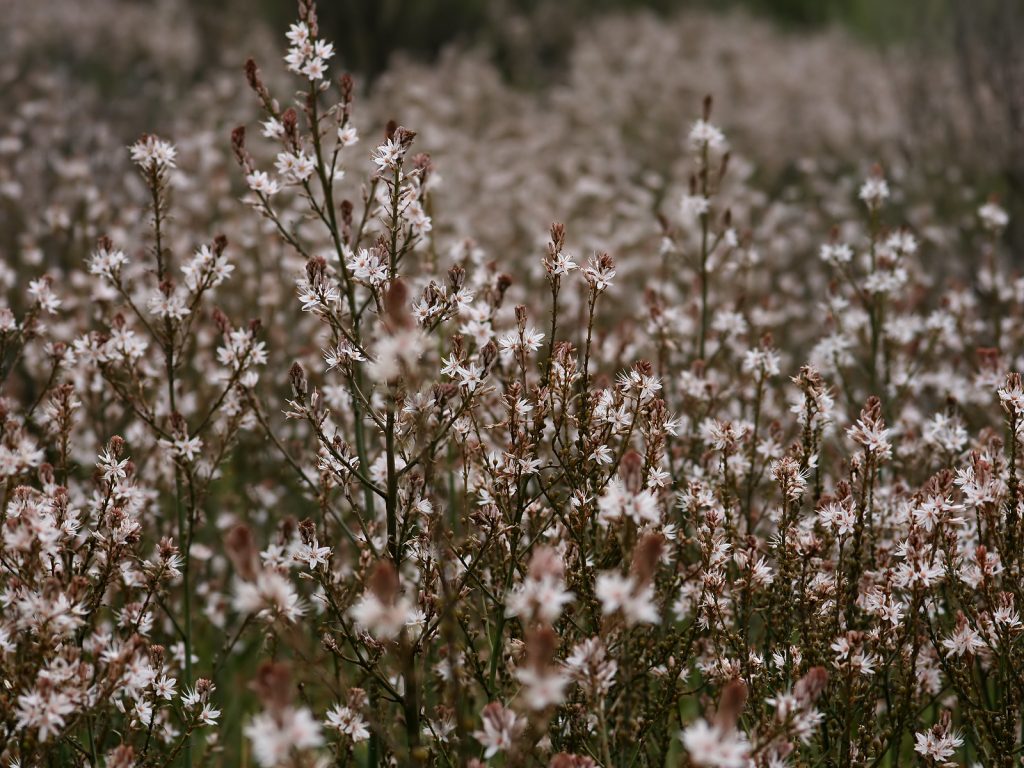
Sources:
https://courses.botany.wisc.edu/botany_422/Lecture/Lect10Mediterr.html
https://www.britannica.com/science/maquis-vegetation
https://en.wikipedia.org/wiki/Garrigue

